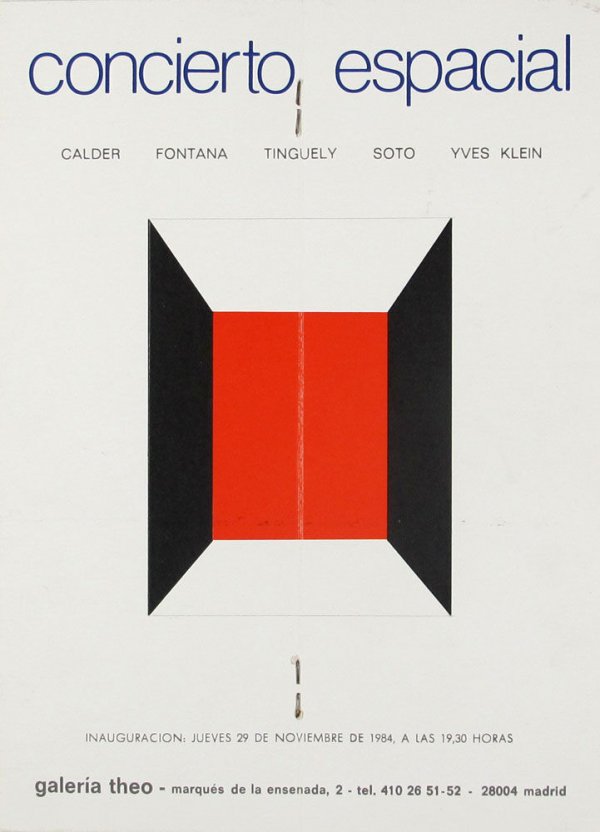Alexander Calder
Alexander Calder (Lawton, Philadelphia, 1898 - New York, 1976) was one of the most influential sculptors of the twentieth century. After a nomadic childhood, he studied engineering at a prestigious university in the United States and then settled in New York in 1923. In 1926 he moved to Paris, where he began making sculptures out of wire, bending and twisting the material to draw three-dimensional objects. Calder was fascinated by the world of the circus and created his own show with actors, animals and tiny objects that he manipulated himself in performances that were a great hit among his friends.
Calder joined the Abstraction-Creation movement founded by Piet Mondrian, Jean Hélion, Jean Arp and Antoine Pevsner, and established a close friendship with Joan Miró and other artists from the European avant-garde. In 1931 he created his first kinetic sculpture, and in 1932 he exhibited his first ‘mobiles’, as his friend Marcel Duchamp called them. These works are suspended volumes, with abstract elements in a dynamic of movement and balance. Calder shared a strong friendship and aesthetic affinity with Joan Miró, who invited him to spend time in Barcelona, Majorca and Mont-roig del Camp. While he was in Barcelona in the early thirties, he organised a performance of his miniature circus for the members of GATPAC. From the forties onwards, having settled in the United States, Calder began making monumental steel sheet sculptures designed to be displayed outdoors in public spaces. As well as sculpture and painting, his artistic effervescence led him to embark on the production of jewellery and domestic utensils, toys, tapestries, theatre sets and illustrated books.
Calder was widely acclaimed from his first solo show at Weyhe Gallery in New York. Other milestones of his career include his Mercury Fountain for the Spanish pavilion at the Paris International Exposition (1937), winning the international award for sculpture at the Venice Biennale (1952), creating the monumental mobile for the new UNESCO headquarters in Paris (1958), and several large-format works for spaces such as the Lincoln Centre in New York and Federal Plaza in Chicago.





![Calder : escultures [text de Joan Miró]](https://img.macba.cat/public/styles/large/public/imagenes/archivo/documento_archivo_A12792.jpg?itok=ZE6QYhMP×tamp=1596686778)